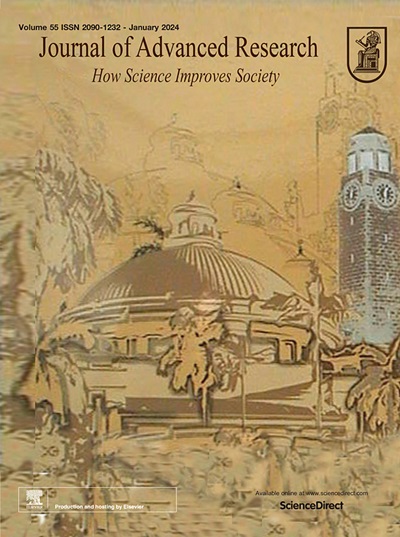Global genomics of Lactococcus lactis: Horizontal gene transfer and intergenic variation drive multiple domestication and dairy adaptation
IF 13
1区 综合性期刊
Q1 MULTIDISCIPLINARY SCIENCES
引用次数: 0
Abstract
Introduction
Lactococcus lactis is a crucial lactic acid bacterium of great economically significance for cheese product. The species exhibits wildly distribution and significant genetic diversity, yet the underlying drivers of its differentiation remain elusive.Objectives
Lactococcus lactis, exhibits complex genetic diversity, yet the mechanisms driving its differentiation and niche adaptation remain poorly understood.Methods
This study assembled a genome dataset of 1008 isolates of Lactococcus lactis from six major habitats across five continents. And combined with public database data, used population genomics and function genomics to analysis the population structure and adaptation.Results
To elucidate its population structure and domestication history, 1008 genomes from six diverse habitats across five continents were analyzed, revealing two major genetic branches subdivided into ten distinct lineages. Phylogenomic and ancestral analyses support a multiple domestication model, with the ancestral plant-associated lineage (L6) diversified into dairy-adapted lineages (L8-L10) through extensive horizontal gene transfer, primarily facilitated by mobile genetic elements. Notably, intergenic regions (IGRs) critically influence phenotypic diversity and genetic structure, underscoring the functional significance of non-coding sequences in microbial adaptation. Pan-genome analysis highlights extensive accessory gene and IGR diversity, with habitat-specific enrichments: dairy lineages are enriched in mobile genetic elements and carbohydrate-active enzymes, while plant isolates show reduced genetic exchange. A machine learning framework integrating single nucleotide polymorphisms, genes, and IGRs accurately predicts isolate-specific fermentation traits, enabling efficient industrial strain selection.Conclusion
These findings redefine non-coding regions as key drivers of microbial domestication and provide a genomic framework to optimize Lactococcus lactis for dairy fermentation and biotechnology, bridging ecological adaptation with applied innovation.

乳酸乳球菌的全球基因组学:水平基因转移和基因间变异驱动多重驯化和乳制品适应
乳球菌是一种重要的乳酸菌,对奶酪生产具有重要的经济意义。该物种具有广泛的分布和显著的遗传多样性,但其分化的潜在驱动因素仍然难以捉摸。乳酸乳球菌具有复杂的遗传多样性,但其分化和生态位适应的机制尚不清楚。方法本研究收集了来自五大洲6个主要栖息地的1008株乳酸乳球菌的基因组数据。并结合公共数据库数据,利用种群基因组学和功能基因组学对种群结构和适应性进行分析。结果为阐明其种群结构和驯化历史,对来自五大洲6个不同生境的1008个基因组进行了分析,揭示了分为10个不同谱系的两个主要遗传分支。系统基因组学和祖先分析支持多重驯化模型,祖先植物相关谱系(L6)通过广泛的水平基因转移(主要由移动遗传元件促进)多样化为适应乳制品的谱系(L8-L10)。值得注意的是,基因间区(IGRs)对表型多样性和遗传结构具有重要影响,强调了非编码序列在微生物适应中的功能重要性。泛基因组分析强调了广泛的辅助基因和IGR多样性,并具有栖息地特异性富集:乳制品谱系富含可移动遗传元件和碳水化合物活性酶,而植物分离物则显示出较少的遗传交换。整合单核苷酸多态性、基因和igr的机器学习框架可以准确预测分离物特异性发酵特性,从而实现高效的工业菌株选择。结论这些发现重新定义了非编码区是微生物驯化的关键驱动因素,并为优化乳酸乳球菌的乳制品发酵和生物技术提供了基因组框架,将生态适应与应用创新联系起来。
本文章由计算机程序翻译,如有差异,请以英文原文为准。
求助全文
约1分钟内获得全文
求助全文
来源期刊

Journal of Advanced Research
Multidisciplinary-Multidisciplinary
CiteScore
21.60
自引率
0.90%
发文量
280
审稿时长
12 weeks
期刊介绍:
Journal of Advanced Research (J. Adv. Res.) is an applied/natural sciences, peer-reviewed journal that focuses on interdisciplinary research. The journal aims to contribute to applied research and knowledge worldwide through the publication of original and high-quality research articles in the fields of Medicine, Pharmaceutical Sciences, Dentistry, Physical Therapy, Veterinary Medicine, and Basic and Biological Sciences.
The following abstracting and indexing services cover the Journal of Advanced Research: PubMed/Medline, Essential Science Indicators, Web of Science, Scopus, PubMed Central, PubMed, Science Citation Index Expanded, Directory of Open Access Journals (DOAJ), and INSPEC.
 求助内容:
求助内容: 应助结果提醒方式:
应助结果提醒方式:


